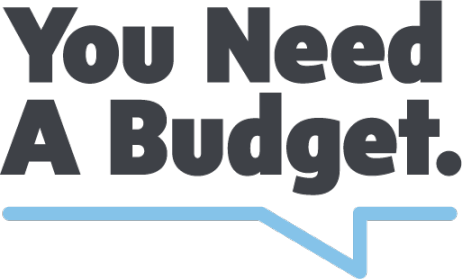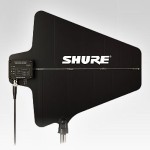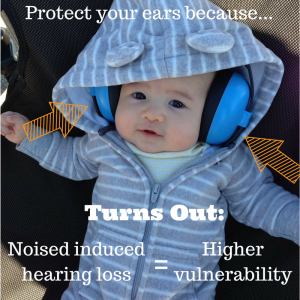Nathan Lively's Blog, page 29
February 12, 2015
The Sound Engineer’s Path Webinar
 The key to surviving the Fire Swamp of pro audio is to be aware of the path.
The key to surviving the Fire Swamp of pro audio is to be aware of the path.
If you are tired of running into quicksand and flame spurt, sign up for The Sound Engineer’s Path, a free webinar this Sunday the 15th at 11am & 3pm PT.
During the webinar we will discover:
The top 5 most common career paths in audio
How to choose which path is best for you
The secret to staying the course and the top mistakes that lead us astray
February 15, 2015
11am PT
Available Tickets
Price
Qty*
Free Ticket
show details +
hide details -
$0.00 (USD) / ticket
Ticket Details
Ticket Sale Dates
- The dates when this ticket is available for purchase.
Goes On Sale:Thursday February 12th, 2015 12:40 am
Sales End:Sunday February 15th, 2015 12:00 pm
Event Access
- This ticket allows access to the following event dates and times. "Remaining" shows the number of this ticket type left:
Event Date
Time
This Ticket
Sold
This Ticket
Left
Total Tickets
Sold
Total Spaces
Left
Sunday February 15th, 2015
11:00 am to 12:00 pm
3
47
3
47
* Please note that a maximum number of 1 tickets can be purchased for this event per order.
3pm PT
Available Tickets
Price
Qty*
Free Ticket
show details +
hide details -
$0.00 (USD) / ticket
Ticket Details
Ticket Sale Dates
- The dates when this ticket is available for purchase.
Goes On Sale:Thursday February 12th, 2015 12:45 am
Sales End:Sunday February 15th, 2015 4:00 pm
Event Access
- This ticket allows access to the following event dates and times. "Remaining" shows the number of this ticket type left:
Event Date
Time
This Ticket
Sold
This Ticket
Left
Total Tickets
Sold
Total Spaces
Left
Sunday February 15th, 2015
3:00 pm to 4:00 pm
2
48
3
47
* Please note that a maximum number of 1 tickets can be purchased for this event per order.
This article The Sound Engineer’s Path Webinar appeared first on Sound Design Live. Sign up for free updates here.
P.S.
Do You Have A Clear Path To Pro Audio?
Easy Invoicing For Sound Engineers
3 Simple Ways That Busy Sound Engineers Can Protect Their Hearing

Announcing: Pro Audio Business Blueprint
Since I started Sound Design Live 4 years ago I have asked over 100 sound engineers to answer this question: What is your greatest challenge in growing your career?
What I discovered is that the same answers come up over and over again and I’ve decided to do something about it.
Today I’m launching a new program that is a response to those biggest challenges.
Let me run through the list to see if any of these apply to you:
How to Get Touring and Festival Work
How to Attract High-Profile Clients
How to Get Paid What You Are Worth
How to Avoid Burn Out
How to Get Yourself Out There and Network Efficiently
How to Change Jobs Within Pro Audio
How to Get Hands-On Experience, Fast
How to Build a Solid Reputation for Quality
How to Generate Passive Income
How to Build a Steady Stream of Work so that you are book solid 6 months into the future
How to Find Business Partners
How to Develop a Plan for Marketing and Self-Promotion
How to Boost Your Confidence and be Unstoppable
If any of that strikes a chord with you, this may be the opportunity you’ve been looking for.
The program is called Pro Audio Business Blueprint – Zero to 4K in 6 Months. It’s intention is for you to be earning $4,000/month by the end of the program. Why $4,000?
Most sound engineers that I talk to say, “I just want to earn what I’m worth, or, I just want to earn enough to pay the bills, or, I just want an appropriate salary,” but they never know what that number is. It’s time to commit to a serious goal with a real number. Think about what $4,000/month would mean to you. What would it be like to have a thriving business as a touring FOH mixer, a theatrical sound designer, or a large scale system tech? How much would it mean to you to wake up every day excited about the new challenges to come?
Pro Audio Business Blueprint is the complete strategy for more confidence, clients, and cash with a fulfilling career in audio.
Its for Audio entrepreneurs, sound engineers, sound designers, and AV technicians who are ready for the next step in their career.
For example:
Maybe you have the technical skills already, but need help getting yourself out there.
Maybe you are moving to a new location and need to rebuild their network.
Maybe you love working in audio, but aren’t sure where your best fit is.
Maybe you’ve been working for a while already and are ready to level up to bigger, more complicated productions.
Pro Audio Business Blueprint includes:
Weekly group coaching calls where I will lead you through a specific set of steps to launch or grow your audio career,
Individualized attention over email and a private online forum, and
The experience and support of your fellow participants, who will be learning alongside of you and sharing what is (and is not) working for them in their career.
Now, You may be nodding your head thinking, “Yes, this makes sense. I just need to get myself out there.”
Guess what? If it were that easy you would have done it already!
The truth is that the #1 problem that most of us have is taking consistent action. You may be paralyzed by indecision, unclear about opportunities, or stuck in old patterns. Personalized coaching and public accountability are the best ways to build strong momentum of meaningful action and break out of those old cycles.
OK, here’s the bottom line: during the next six months I will work with only thirty people, so I (and you!) will be very focused on the program. I expect a 100% success rate.
If you truly want to move forward in your career and you have not committed yourself to making focused daily improvements, this is your opportunity to change that.
And I’m going to make it really easy for you by adding a guarantee. Try the full program out for 30 days; attend group calls, access all teaching materials, and post questions in the forum. If it’s not working out for you after 30 days, for any reason, you can cancel. There’s no risk for you at all.
If you wake up with the sense that you are not yet living into your full potential or regretting the work you have ahead of you, please decide today, right now, to make a change. I’m taking a stand for you and your success and I’m inviting you to take the next step.
We start on February 22nd, so go to sounddesignlive.com right now and sign up for Pro Audio Business Blueprint, to secure your spot in the program. Join me in the intention of raising your income to $4,000/month and creating the foundation for a lifelong career in audio that you can be proud of.
And remember, you can try it out for 30 days for FREE. So you truly have nothing to lose and everything to gain.
This article Announcing: Pro Audio Business Blueprint appeared first on Sound Design Live. Sign up for free updates here.
P.S.
Do You Have A Clear Path To Pro Audio?
Best Tips For Building A Career In Pro Audio
What a CPA, Bookkeeper, & Business Manager Can Do for Your Business

February 4, 2015
7 Actions You Can Take Today to Solve Your Short Term Cash Flow Problems
 *This article was originaly published in Pro Sound News Europe, in GBP*
*This article was originaly published in Pro Sound News Europe, in GBP*
It happens to me every year. Come August, work slows almost to a crawl. Suddenly, I’m in survival mode.
I hate it, but it’s not always a thing born of sloth. This year, for example, I’ve been so busy focusing on future projects that short-term cash flow went way down on the list of priorities. Unfortunately, money is something that can’t be ignored for long. Unless you are ready to take on a major lifestyle shift, there are bills you have to pay.
Here are seven great tips for dealing with short term cash flow problems.
#1 – Plan for next year, today.
If you look back at your calendar from the last few years, chances are good that you’ll find cycles of feast and famine. Don’t ignore the lesson! Build a healthy relationship with money by using those cycles to make a plan, then review it regularly.
 Here’s a basic example that I’ve used:
Here’s a basic example that I’ve used:
$2,800/month = My baseline survival income.
$255/month = How much I need to save each month for the next 11 months to prepare for slow August.
$3,055/month = My new baseline survival income.
Create a new August Fund account and set up automatic monthly transfers of $255 from my checking account so that the money is saved before I can spend it. Or setup a savings goal using YNAB.
#2 – Collect on outstanding invoices.
No need to explain this. Go through your past invoices and confirm that they are all accounted for. While you’re at it, check for any unbilled work.
The last time I did this, I found $560 in outstanding invoices (whoops!). One required me to go around the client directly to their bookkeeper, with whom I have communicated in the past. Another required some tough love.
I’ve only ever had to chase one client around the block, and that was because they sincerely thought they had already paid me and that I was crazy. The venue I was working with put a hold on her account and she eventually paid up. Turns out she had PayPalled the wrong person. Ah, technology.
#3 – Phone a friend.
Only in this case make sure the friend is a colleague or client. This isn’t begging, it’s a great opportunity to reconnect with existing clients and colleagues who you like working with. Give them your availability over the next month in case they have any last minute gigs they can refer you for.
 HOWEVER: Do not slide backwards into working with dud clients. When times get tough and you’re nervous about paying the rent, you might be tempted to reconnect with past clients you hated working with or who were in no way ideal. It’s not worth it. Instead of falling back out of fear, use your time to make new connections and ask for referrals from current clients. Doing work you hate will only demotivate you and lead to more of the same crap.
HOWEVER: Do not slide backwards into working with dud clients. When times get tough and you’re nervous about paying the rent, you might be tempted to reconnect with past clients you hated working with or who were in no way ideal. It’s not worth it. Instead of falling back out of fear, use your time to make new connections and ask for referrals from current clients. Doing work you hate will only demotivate you and lead to more of the same crap.
#4 – Sell some equipment.
This is low on the list because selling used gear might not be worth the time you put into it, but if you’ve been meaning to get rid of some stuff anyway, now is a great time to get on that.
For example, I have an amazing Seventh Circle mic preamp that I built with my own two hands, but I hardly ever use it anymore. I would be much happier for it to find a better home.
#5 – Brainstorm and take action.
There’s nothing like a specific goal to make you focus. Follow these steps:
Write your intended outcome at the top of a piece of paper or Workflowy list. For example: Earn at least $2,800 by Aug 31.
Quickly brainstorm as many possible projects or actions as you can. To get your creative muscle moving, set a big goal like fifty ideas. Having trouble? Ask a friend. They are often more objective and will suggest solutions you were afraid to consider.
Review your list and choose the 20% (20% of 50 is 10) of your actions that are most likely to be successful. How do you choose? Use your best judgement from past experience and all of your current knowledge of the market.
For each of those top projects, list all of the actions needed to complete it. Defining at least the first action will force clarity.
Prioritize your list based on the projects that are most likely to deliver the fastest returns. Get to work. Avoid skipping the difficult and uncomfortable tasks; instead, use the motivation from your intended outcome to be bold.
#6 – Tap into your emergency account.
They call it savings for a reason. Avoid tapping your emergency fund until all other options have been exhausted.
What’s that, you don’t have an emergency account? You don’t even know what one is? Don’t worry, I didn’t either until a year ago. Basically, an emergency account is a savings account where you have accrued funds to support yourself without income for 2-12 months. This is different from the “August Fund” account I mentioned in item 1 — you should contribute to your emergency fund every month in addition to your lean-month accounts. Start saving today with whatever you can afford (really, even $5 a month is better than $0 a month!), but set a goal to start making enough so that you can fill that emergency account within the next 2 years.
#7 – Communicate with your debtors.
Landlords hate to be stiffed, largely because in many cases it is extremely difficult to force you to pay. If you ask them for leniency they will probably just say no. Instead, state your situation and your intended date to square up. Keeping them in the loop will avoid aggressive behavior.
Once I received an aggressive Pay up or we’ll kick you out letter from my landlord in NYC, even though I’d paid. I called him up and it turned out that his secretary had accidentally attributed my payment to someone else and their system had automatically sent me the letter. Automated legal action. Scary.
Conclusions
I hope this helps to relieve the pressure of your short-term cash flow issues. Remember, don’t panic! If you keep your head, you will often find a better solution than selling your soul. If you need help brainstorming ideas, email me.
This article 7 Actions You Can Take Today to Solve Your Short Term Cash Flow Problems appeared first on Sound Design Live. Sign up for free updates here.
P.S.
10 Critical Tax Questions Answered For Sound Engineers
Be Your Own Attorney: The Smart Business Guide For Freelancers
How Much Do Live Sound Engineers Make?

January 26, 2015
What a CPA, Bookkeeper, & Business Manager Can Do for Your Business
In this episode of the Sound Design Live podcast I speak with certified public accountant Rick Norris on creating a strategic plan for your business (which is something you need even before a business plan) and about what players you the small business owner should recruit for your team. He also answered these burning questions:
What’s the difference between a CPA and a bookkeeper?
How do I protect myself from fraud (bogus checks!)?
How do I know when I need a bookkeeper?
What percentage of income do medical bills need to be before I can claim them as a write-off?
How do I use independent contractors without running afoul of labor laws?
How do I reduce my audit risk if I take a business loss?
Details from the Podcast:
 All music in this episode by Gold Chains.
All music in this episode by Gold Chains.Rick’s articles and Rick Norris CPA on Facebook and Twitter.
Stephen Fishman’s book and interview.
Tips:
Tell your bank to alert you every time someone tries cash a check.
Never have bookkeepers in charge of both writing checks and doing bank reconciliations. It’s supposed to be a check and balance.
Make sure you classify your staff correctly. The IRS is really coming down on small businesses who improperly classify employees as independent contractors.
Quotes:
Once you’ve built the car, you need a map. That’s what a strategic plan is: a road map of where you are going to be 10-20 years from now.
Most people think that if they are not going out of the black, they’re doing fine, but they really don’t have a direction for where they are going.
Keep one eye on the step in front of you and one eye on the horizon.
If you can’t measure it, you can’t manage it.
Once you start going outside of your core competency you run the risk of losing your vision, and then the whole thing just falls apart.
The more money you make, the less you can deduct.
This article What a CPA, Bookkeeper, & Business Manager Can Do for Your Business appeared first on Sound Design Live. Sign up for free updates here.
P.S.
Be Your Own Attorney: The Smart Business Guide For Freelancers
10 Critical Tax Questions Answered For Sound Engineers
The Sound Engineer’s Pain-Free Guide To TurboTax

January 19, 2015
GIVEAWAY: Gain Total Control of Your Money
 You Need A Budget (YNAB) is powerful proven software for desktop, iPhone, and Android that I wrote about in my post on How I Stopped Going Broke.
You Need A Budget (YNAB) is powerful proven software for desktop, iPhone, and Android that I wrote about in my post on How I Stopped Going Broke.
The best part about YNAB is that it comes with a proven method, an active online community, and loads of free education. So if this is the first time you’ve tried budgeting, it’s perfect. Also, the software is clear, easy to use, and will synchronize across all of your devices.
Because I want you to take control of your money, I am giving away a free copy of YNAB ($60 value) to one lucky winner.
The contest ends at midnight on January 29th. The winner will be announced on January 30th.
This article GIVEAWAY: Gain Total Control of Your Money appeared first on Sound Design Live. Sign up for free updates here.
P.S.
How I Stopped Going Broke (Once and for All)

January 17, 2015
How I Stopped Going Broke (Once and for All)
 I used to go broke every year. To stay out of the red, I had to stop ignoring money.
I used to go broke every year. To stay out of the red, I had to stop ignoring money.
Being a sound engineer or a freelancer of any kind can make budgeting difficult. Fortunately, difficult does not mean impossible! I’ve learned several powerful strategies in the last year that have completely changed my game.
The Big Shift
In March of last year I attended the Big Shift Experience seminar. It was my first real business seminar and I was struggling to keep up with all of the new ideas. They had us perform some great exercises, and one of my favorites targeted our relationships with money. I’ll describe it for you so that you can try it with a friend:
 Pretend that your friend is money, in the flesh. Talk to them! What do you appreciate about Money? What has been been challenging for you? What do you want for the future? Take five minutes to get everything off of your chest.
Pretend that your friend is money, in the flesh. Talk to them! What do you appreciate about Money? What has been been challenging for you? What do you want for the future? Take five minutes to get everything off of your chest.Next, let Money take five minutes to respond (using their imagination) about how they feel about you and the things you just said. They might explain the status quo and make some suggestions for the future, or they might try to help clarify the things you said to them. They don’t need to give you the secrets to success; the power is in hearing your words and intentions reflected back to you.
This may sound a little woo, but here’s what I discovered:
I had been mostly ignoring money my entire life. I only gave it attention when I was upset about my finances and forced to confront the situation.
To build a strong relationship, Money and I needed to hang out more regularly.
Action
So, what was the best way to integrate Money into my life? Slowly and steadily. I started simply, by taking ten minutes every day to review my finances.
Check all accounts to record/confirm new income and expenses.
Make budget adjustments as necessary. (The nice thing about checking in every day is that you see the small transactions and habits that can lead to bigger problems and catch them before they grow.)
Results
Super simple, but just that little action can make a big change in your finances. What you give attention to grows.
I was ignoring money because I didn’t want it to run my life. The result was that it ran my life. I’m not a millionaire (yet) but I know where my money is going and I no longer budget on faith, because I know:
How much my lifestyle costs.
How much money I need to make to maintain my lifestyle.
How much I need to charge for my services.
How much I can save for my future.
When I will be able to stop working for money (more on this in a future post!).
How much I can spend on food, travel, and lap dances.
Why You Need a Budget
Here are some common excuses people use to avoid writing a budget:
I don’t make enough money to use a budget.
Budgets don’t work.
I check my account balance before every purchase.
 How well have those worked for you? Have you gone broke?
How well have those worked for you? Have you gone broke?
I have. Many times.
If you are going to participate in modern society, you are going to spend money (or Bitcoin). Stop pretending like you can run it all from your head and write those numbers down.
NOTE: It’s not all about limiting spending. It’s about exercising control, and creating goals and a strategy for success.
The Solution
Create a budget. Update it daily with current information.
Tomorrow I will start a giveaway for a free copy of You Need A Budget (YNAB) software, but before then you can read their four-step method. Here’s a quick overview:
Give every dollar a job: This is similar to the envelope technique, if you’ve ever tried that. One big mistake that I made over and over while trying to make a budget is that I would use “Monopoly money” (that is, fake money that I didn’t have yet). I would project into the future and try to guess the entire month, then be surprised when I came up short. A more realistic approach is to only budget money when you have it, and then use that real money only for the next most urgent items in your budget.
Save for a rainy day: Last month I had to spend $500 to repair my car. Surprise! It sucked, but honestly, I can expect that happen at least once a year. As soon as I realized that, I created a Car Maintenance budget category where I save $42/month ($500/12months). Next time my car breaks down, I’ll be ready.
Roll with the punches: Surprise expenses are a big problem that I struggle with when I’m budgeting. There are a few ways you can make them easier on yourself. Last month I needed a piece of software I had not budgeted for. It was fairly simple to move some money out of my Buffer and Marketing category and into the Software category. What’s a buffer?
Live on last month’s income: A buffer is a safety net equal to at least one month’s income. Once you have a buffer saved, you can budget out an entire month in advance and be more flexible with surprise expenses.
If you don’t want to buy YNAB ($54, normally $60), you can still get started today with a simple spreadsheet.
This article How I Stopped Going Broke (Once and for All) appeared first on Sound Design Live. Sign up for free updates here.
P.S.
The Sound Engineer’s Pain-Free Guide To TurboTax
10 Critical Tax Questions Answered For Sound Engineers
How Much Do Live Sound Engineers Make?

December 23, 2014
Frequency Coordination and Antenna Placement for a Rock-Solid Wireless Microphone System
In this episode of Sound Design Live I interview Karl Winkler from Lectrosonics. We discuss the basics of frequency coordination, wireless microphone myths, and how the Super Bowl manages 1,000 channels of wireless devices. Karl also explains what a backup frequency is, whether bluetooth devices, microwaves and cell phones will cause interference, and how to prepare for rogue wireless devices.
Register for Making Wireless work with Karl Winkler – January 3-4, 2015 – Dallas, TX
 Notes:
Notes:
Music in this episode by The Giovanni Quartet, Brodsky Quartet, The Bartok Quartet, and Brentano String Quartet.
USC Recording Arts
Karl’s principles for success in audio
Have a good attitude. If your job is to roll tires from the back of the store to the front, you should be so good that people will pay to see you do it. Don’t be afraid of the work or think of it as being beneath you.
The basics always matter. Every art and science requires you to know the fundamentals.
Really listen. Learn to use use your ears as a troubleshooting tool. See Trouble-Shooting Audio Systems tutorial.
SynAudCon – Making Wireless Work
Wireless Workbench
Myths
Wireless mics are voodoo.
A directional antenna is always better.
I can get more range with boosted antennas.
Lectrosonics is too expensive.
Interview with Jim Venable from the Wireless Speaker Association
Axient system from Shure
Spectra Pulse from Audio Technica
Lectrosonics Facebook Group and FAQ page
Words
 Cavity Filter = Pass band filter. Blocks out bands of frequencies to focus only on the ones you want.
Cavity Filter = Pass band filter. Blocks out bands of frequencies to focus only on the ones you want.Shark Fins = Directional antennas = LPDA (log periodic dipol arrays)
Intermodulation distortion = Occurs when two or more signals mix within an active device and create phantom frequencies.
Backup/spare frequencies = Pre-coordinated channels that you don’t need at the moment, but are already calculated to fit into your system design, preventing guess work.
Big Mistakes
Not separating your IEMs, comms, and mics into different bands.
Bad antenna placement.
Not calculating signal loss for long antenna cable.
Quotes
“Audio is a guilded career. You start as an apprentice. That’s how most people get their start.”
“Your attitude is irreplaceable.”
“There is something to learn from everything you do in life.”
“Any time you add an active component, you are potentially raising the noise floor and increasing distortion. It can mix signals and create intermodulation products. You always want a net zero gain between antenna and receiver.”

This article Frequency Coordination and Antenna Placement for a Rock-Solid Wireless Microphone System appeared first on Sound Design Live. Sign up for free updates here.
P.S.
How To Use Plugins with an Analog Console And Wireless Control
Multi Channel Wireless Home Theater Sound Systems
There’s No Such Thing As A Bad Microphone

December 12, 2014
3 Simple Ways That Busy Sound Engineers Can Protect Their Hearing
 With the frightening realization that noise induced hearing loss is compounding, that is, the more you get, the more vulnerable you are, I decided it would be good to put together a short list of the best ways to protect your most valuable sense for a long and happy career.
With the frightening realization that noise induced hearing loss is compounding, that is, the more you get, the more vulnerable you are, I decided it would be good to put together a short list of the best ways to protect your most valuable sense for a long and happy career.
#1 Overexposure
How do you know if you are experiencing over exposure? Well, if you come home every night with your ears ringing, then that’s a sign, but exposure is cumulative over a day and over your lifetime so you might want to fill out the dosimetry spreadsheet from the last post to see if you are at risk.
Because daily exposure is cumulative, avoid loud environments when you are not working. You need about 10 hours of quiet for your ears to reset.
Make your home a sanctuary of peace.
Turn off the radio on the way home.
Wear ear plugs or noise reducing headphones on the subway, train, and BART.
The less ambient noise you have to overcome, the lower you can keep your volume. -Jovie Havard Strzelecki
I use a few of different noise protection strategies at work.
If I’m the A2 or stage tech and I’m not doing a lot of critical listening then I’ll wear my molded ear plugs or just regular foam plugs that I can pop out if I need to have a conversation or listen more closely.
If I’m the A1 for an all day festival, I’ll try to mix as much as possible with my molded ear plugs in. It’s not the same as mixing without them, but I can remove them regularly and train myself to get the job done. If I get breaks, I’ll try to find a quit(er) spot to relax.
If I were mixing stage monitors on a regular basis I would drop $1,000 on a good in-ear-monitor system.
Use custom-made filtered earplugs. For around $200, you can have a pair of custom-molded plugs which attenuate evenly across a broad range of frequencies, preserving sound quality and verbal communication while protecting your hearing. Some filtered plugs come with the option of removable filters so that you can choose your attenuation level. Call an audiologist to find out if they offer this type of plug. Custom plugs can also be made for maximum attenuation, which is around 30 dB and can be worn under circumaural earphones [surround the ear] for even more protection. -Jovie Havard Strzelecki
#2 Dehydration
First of all, noise exposure can cause fatigue, even if you aren’t running around tiring yourself. One of the best ways to combat fatigue is by staying hydrated.
Drink a little every 15 minutes instead of trying to gulp it down once every 2 hours.
Your urine will be pale or clear if you are hydrated.
Avoid energy drinks. Processing the extra sugars spends more of your body’s energy.
 #3 The Audiologist
#3 The AudiologistDo you rely on feeling to decide if you will visit the dentist? Do you hope you won’t get an STD and use that as an excuse to avoid getting tested?
Then why would you avoid a simple, needle-free test procedure that could give you real insight into your hearing health?
Get a baseline hearing test! A 20 minute audiogram can reveal your current hearing status so that you can track changes to your hearing and patterns such as noise-induced hearing loss. A change in hearing may indicate the need to further limit your noise exposure and/or change your method of hearing protection. -Jovie Havard Strzelecki
This article 3 Simple Ways That Busy Sound Engineers Can Protect Their Hearing appeared first on Sound Design Live. Sign up for free updates here.
P.S.
Important Facts about Noise Induced Hearing Loss and How to Protect Yourself
One Simple Reason I Chose To Be An Audio Engineer Major
Food And Drink At Work For Sound Engineers

December 6, 2014
Important Facts about Noise Induced Hearing Loss and How to Protect Yourself
 Jovie Havard Strzelecki is a Diagnostic and Dispensing Audiologist. We talk about noise induced hearing loss, common hearing loss myths, and what you need to know to stay healthy and protect your most valuable asset. We also discuss vertigo, motion sickness, how to calculate your noise exposure risk, hearing loss rehabilitation, adult stem cell transplant hearing loss, and other alternatives to hearing aids.
Jovie Havard Strzelecki is a Diagnostic and Dispensing Audiologist. We talk about noise induced hearing loss, common hearing loss myths, and what you need to know to stay healthy and protect your most valuable asset. We also discuss vertigo, motion sickness, how to calculate your noise exposure risk, hearing loss rehabilitation, adult stem cell transplant hearing loss, and other alternatives to hearing aids.
Details from the podcast:
All music in this podcast by Curtis Craig
Hair cells are the sensory receptors located within the organ of Corti on a thin basilar membrane in the cochlea of the inner ear. -Wikipedia
Types of hearing loss:
Mechanical physical injury/trauma to hair cells from impulse sound.
Metabolic/chemical injury from build up of calcium during stress, causing hair cell death from the accumulation of noise exposure.
Myths
If you have hearing loss, things must be louder in order for you to hear them.
If you already have hearing loss, you don’t need ear plugs.
Science Daily article: Sensory hair cells regenerated, hearing restored in noise-damaged mammal ear
BetteringHearing.org
Quotes
“Once you have a little bit of hearing loss, especially noise-induced hearing loss, you are more vulnerable to more noise-induced hearing loss.”
“Hearing tests are almost always covered by health insurance. Hearing aids almost never are.”
.


This article Important Facts about Noise Induced Hearing Loss and How to Protect Yourself appeared first on Sound Design Live. Sign up for free updates here.
No related posts.

October 2, 2014
Seeing Sound is Open!
 If you are not on my mailing list then you may have missed that my new program on system tuning is now open for registration. Sign up before Oct13!
If you are not on my mailing list then you may have missed that my new program on system tuning is now open for registration. Sign up before Oct13!
This article Seeing Sound is Open! appeared first on Sound Design Live. Sign up for free updates here.
P.S.
Quick announcement and a Favor





